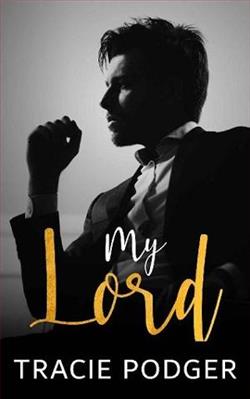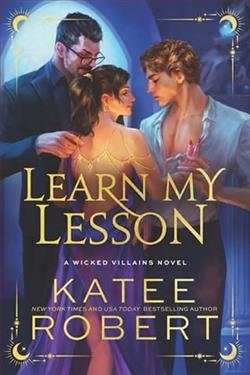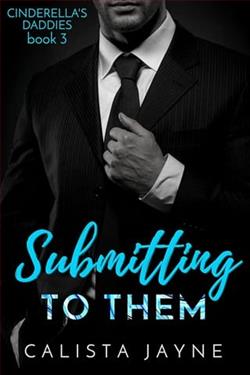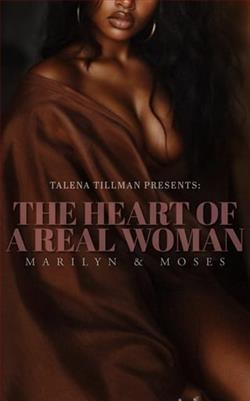Page 22 of Badlands
“Of course.” He opened another drawer full of prehistoric fetishes, with the central compartment containing two lightning stones almost exactly like the ones found with the dead woman.
Nash picked them up. “Want to see a demonstration?”
“Well—” Nora began, but was interrupted by Skip, who nodded eagerly.
“Hit the lights, Skip, and shut the vault door.”
Skip shouldered the heavy metal door shut and flicked off the lights, plunging the vault into darkness.
After a brief silence, a suddenclick-clicksounded, then in rapid succession—click-click,click-click—and each time the stones flashed with internal fire of the most lovely, mysterious lime-green hue: just like the pair Nora had demonstrated to Corrie in the FBI lab.
“Awesome!”
“Lights.”
Skip turned the lights back on.
Nash held the stones in front of him, a boyish grin on his face.
“Thank you,” said Nora, despite herself enthralled all over again. “The FBI asked me to find out the history of your stones, where they were found, by whom—anything that might help identify the woman and learn what she might have been doing.”
“Of course,” said Nash, putting the stones back in the drawer, then shutting and locking it. “Let’s go back to my study.”
Once they were seated again, Nash leaned forward. “Those stones are from my grandfather’s original collection. He was a self-made man, no academic background—a high school dropout. But he was a brilliant collector with a good eye, and he picked up stuff back in the thirties and forties before it was considered valuable. But—” here Nash opened his hands—“he wasn’t good at keeping records. He would scrawl some basic information on a piece of paper and stuff it in a box with an item. Specifically, I still have the piece of paper for those stones, but all it says isGallina, Hibben, 1935.”
“Hibben?” Nora echoed. “You mean Frank Hibben, the discredited archaeologist?”
“He explored the Gallina area back in the thirties and wrote several monographs about it. The article I’d recommend is ‘Murder in the Gallina Country,’ published in theSouthwest Reviewin 1951. Still available through JSTOR.”
“You’re confident your grandfather got these stones from Hibben?”
Nash shrugged. “All I know is what’s on the note. According to his own published work, Hibben tramped all over that country during his lifetime. Allegedly, he wasn’t above keeping some of the artifacts he found or giving them to friends.”
“No indication of where in Gallina they came from?”
“None. The Gallina people lived in a labyrinth of canyons—
Gallina Canyon was the epicenter, but they also spread out in Chama River Canyon and up on Mesa Golondrina—that whole area is rugged as hell and most of it is designated wilderness today. Gallina was a strange tribe—you know much about them?”
“Just a little.” Among mainstream archaeologists, the Gallina were considered a minor group that all other Pueblo Indians disavowed as their ancestors. Access to their scattered ruins, often in inaccessible cliffs, was difficult; there was no professional glamour in studying them.
“It seems they were wiped out around 1200 CE. The entire population massacred. Hibben excavated some of their ruins and found skeletons of people who’d been brutally killed and dismembered, chopped up, feet cut off, babies’ skulls crushed, some full of arrowheads. Their houses were burned, the adobe walls blackened by fire.”
“What do you think happened?” Skip asked excitedly.
“Nobody knows. It’s one of the mysteries in Southwestern archaeology. I have my own theories—but of course I don’t have a PhD, so what I think doesn’t count.”
“Whatdoyou think?” Skip asked.
Nora suppressed a smile. Skip was indeed connecting with Nash, who she could see was enjoying the attention.
“I think the Gallina were up to no good. Witchcraft, maybe. Not that I believe in actual black magic, but witchcraft was a much-feared force among the Pueblo and Navajo Indians. I think the Gallina were some bad dudes, and at a certain point the Pueblo Indians decided to wipe them out. Their sacred kivas—those underground circular chambers they used for ceremonies—were burned, and the murals on their walls defaced and profaned.”
“Sort of like a prehistoric genocide.”
“You might call it that,” said Nash. “I’ve also got a collection of stone knives from Gallina that came from my grandfather. I had them residue tested, and the results showed human blood. So I think there might even have been human sacrifices.”
“Like the Aztecs?”















